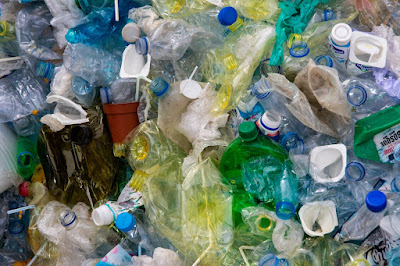The Growing Problem of Electronic Waste and What You Can Do About It
Electronic waste, or e-waste, refers to discarded electronic devices, such as computers, smartphones, televisions, and other electronic gadgets.
With the rapid advancement of technology, we are producing more and more e-waste than ever before.
Unfortunately, most of this waste ends up in landfills or gets exported to developing countries, where it causes significant environmental and health problems.
According to the United Nations, the world generated 53.6 million metric tons of e-waste in 2019, which is equivalent to 7.3 kilograms per capita.
This number is expected to rise to 74.7 million metric tons by 2030, which is a staggering 39% increase in just over a decade.
The growing problem of e-waste poses a significant threat to our environment and public health, and it's essential that we take action to address it.
So what are the ways e-waste is harming our planet and what can you do to help?
The Environmental Impact of E-waste
Electronic devices are made up of a wide variety of materials, including plastic, metal, and glass.
When these devices are not recycled or disposed of correctly, they can release hazardous materials into the environment.
For example, CRT televisions and computer monitors contain lead, which can contaminate soil and water sources.
Additionally, electronic devices contain rare earth metals, which are essential for the production of new devices. These metals are becoming increasingly scarce and are often mined in environmentally damaging ways, leading to further harm to the environment.
One of the biggest environmental impacts of e-waste is its contribution to greenhouse gas emissions. E-waste that ends up in landfills decomposes and produces methane, a potent greenhouse gas that is even more damaging than carbon dioxide.
Additionally, the production of new electronic devices requires significant amounts of energy and contributes to carbon emissions.
The Health Risks of E-waste
The improper disposal of e-waste also poses significant health risks to communities around the world.
When electronic devices are not recycled correctly, they can release toxic chemicals into the air, soil, and water sources. These chemicals can cause serious health problems, including cancer, birth defects, and developmental issues.
Furthermore, the export of e-waste to developing countries has become a significant problem. In these countries, e-waste is often processed in unsafe and unregulated conditions, exposing workers to hazardous materials without proper protective gear. This leads to high rates of illness and injury among workers and the surrounding communities.
What You Can Do to Help
The good news is that there are several things you can do to help reduce the amount of e-waste and protect the environment and public health. Here are some examples:
Recycle Your Electronic Devices
One of the most effective ways to reduce e-waste is to recycle your electronic devices properly.
Many cities and towns offer electronic recycling programs that allow you to drop off your old devices for recycling. Additionally, many electronic retailers offer recycling programs, so you can drop off your old devices when you purchase new ones.
When recycling your electronic devices, be sure to choose a reputable recycling company that follows strict environmental and safety standards.
You can check to see if a recycling company is certified by organizations such as e-Stewards or R2.
Donate or Sell Your Old Devices
If your electronic devices are still in good working condition, consider donating or selling them instead of throwing them away.
Many charities and nonprofit organizations accept donations of electronic devices, which they can refurbish and use for their programs. Also, selling your old devices can help you earn some extra cash while keeping them out of landfills.
Reduce Your E-waste Consumption
Reducing your e-waste consumption is a great way to make a significant impact on the environment.
Here are a few ways to do that:
- Buy high-quality devices that are built to last. Cheap electronics often have a shorter lifespan and are more likely to end up as e-waste.
- Consider repairing your electronic devices instead of replacing them. Many issues can be fixed with a simple repair, saving you money and reducing your e-waste footprint.
- Buy used or refurbished electronics instead of new ones. This not only reduces e-waste but also saves you money.
- Avoid buying new electronics unnecessarily. Do you really need the latest smartphone or laptop? Consider if your current device can still meet your needs before upgrading to a new one.
As you can see, electronic waste is a growing problem that has significant environmental and health impacts.
However, by taking action and recycling, donating, and reducing our consumption of electronic devices, we can make a positive impact on the planet.
So, next time you're ready to upgrade your electronic device, remember the impact that your decision can have on the environment and choose to make a responsible and sustainable choice.
(The image source is https://www.pexels.com/photo/garbage-inside-a-room-938044/ )




Comments
Post a Comment